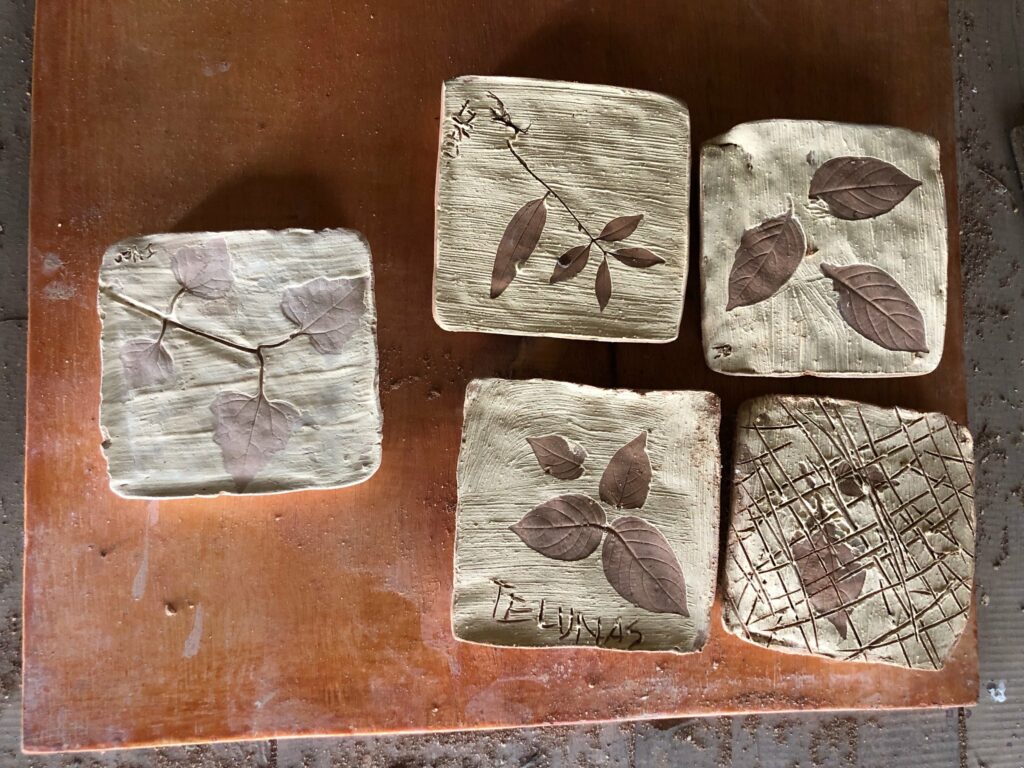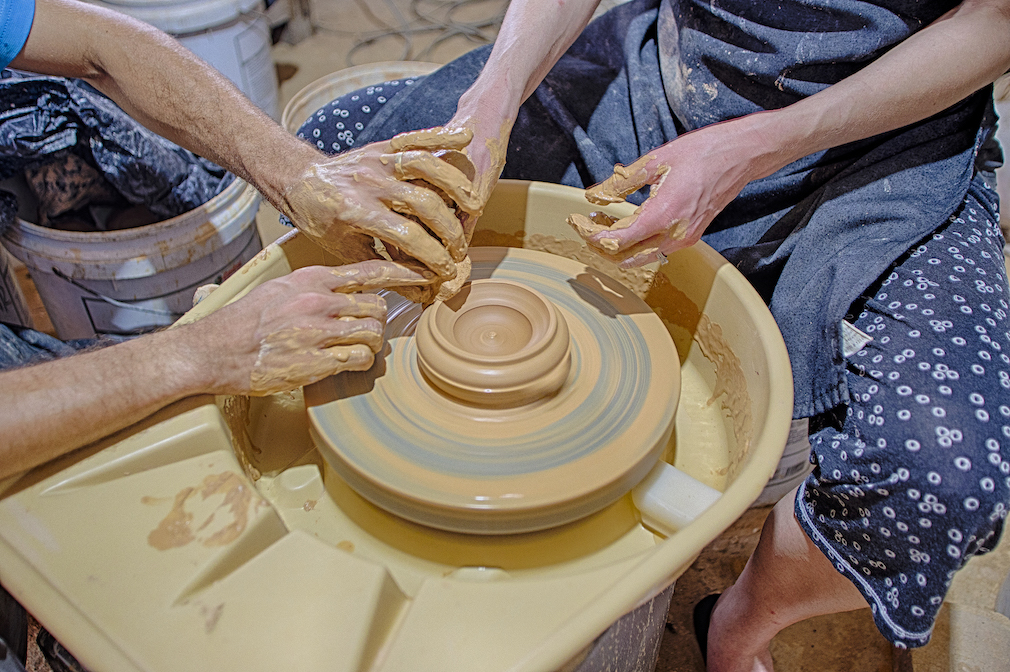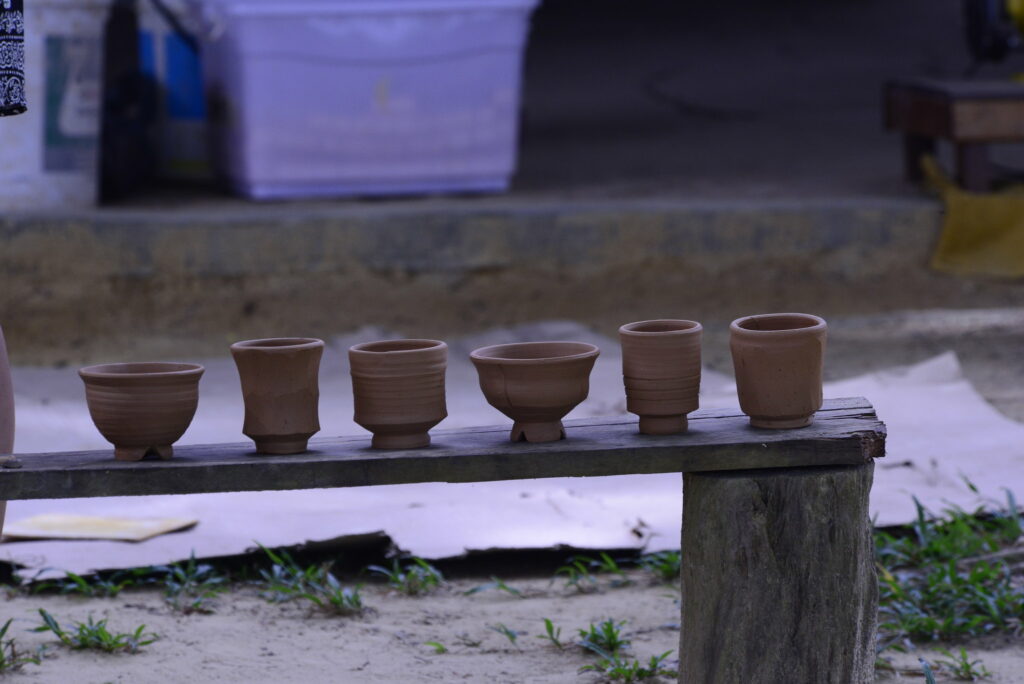Welcome to Our Pottery Studio
In September 2014, Jennie and Paul Christensen became part of the Telunas Resorts family. Jennie took charge of the school group programs, while Paul joined as an artist-in-residence, among other roles. He proposed the idea of constructing a pottery kiln to the resort owners, aiming to create unique guest experiences and handmade souvenirs from the clay found on Sugi Island. They embraced the concept, and thus, the pottery studio was established.
Local residents helped identify areas rich in quality clay. Paul initially built a small kiln to test the clay’s suitability for pottery.
Testing the Clay
The small kiln was also utilized to experiment with different glazes, aimed at developing effective stoneware glaze recipes using local materials. The initial results were encouraging.
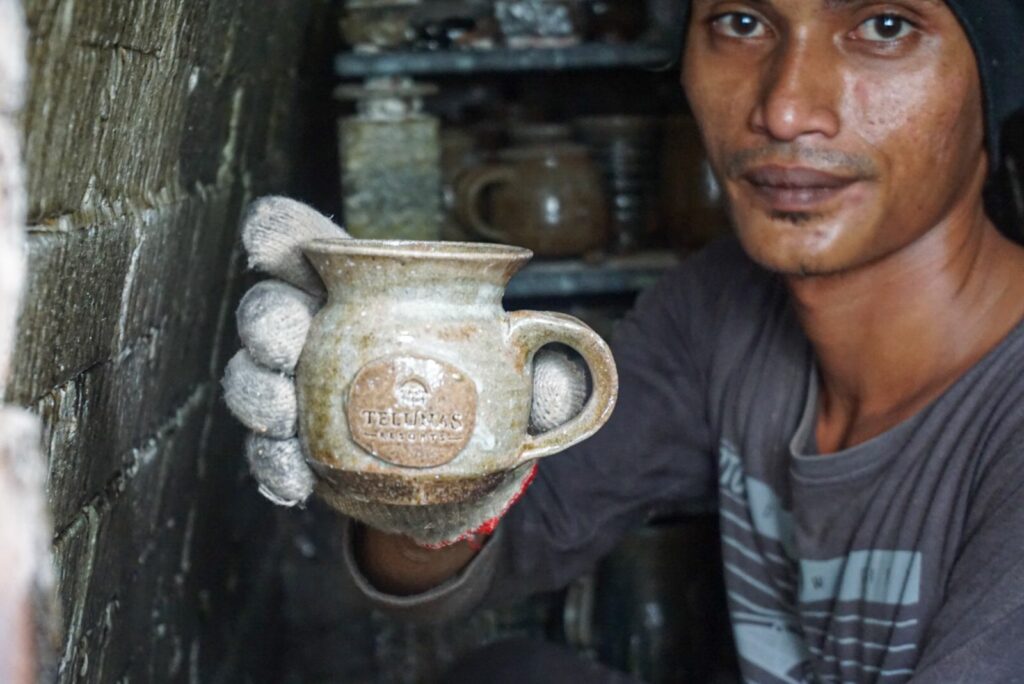
Building the Manabigama
In March 2015, Paul, Supriyadi, Yan, and other staff constructed a kiln known as a “manabigama,” which translates to “beautiful learning kiln.” This kiln is capable of firing 150 to 200 pottery pieces simultaneously, depending on their size.
The firing process typically requires about 25 hours of steady wood stoking, consuming around 2 cubic meters of firewood. We utilize recycled wood from construction projects, landscaping trimmings, and naturally fallen trees from the forest.
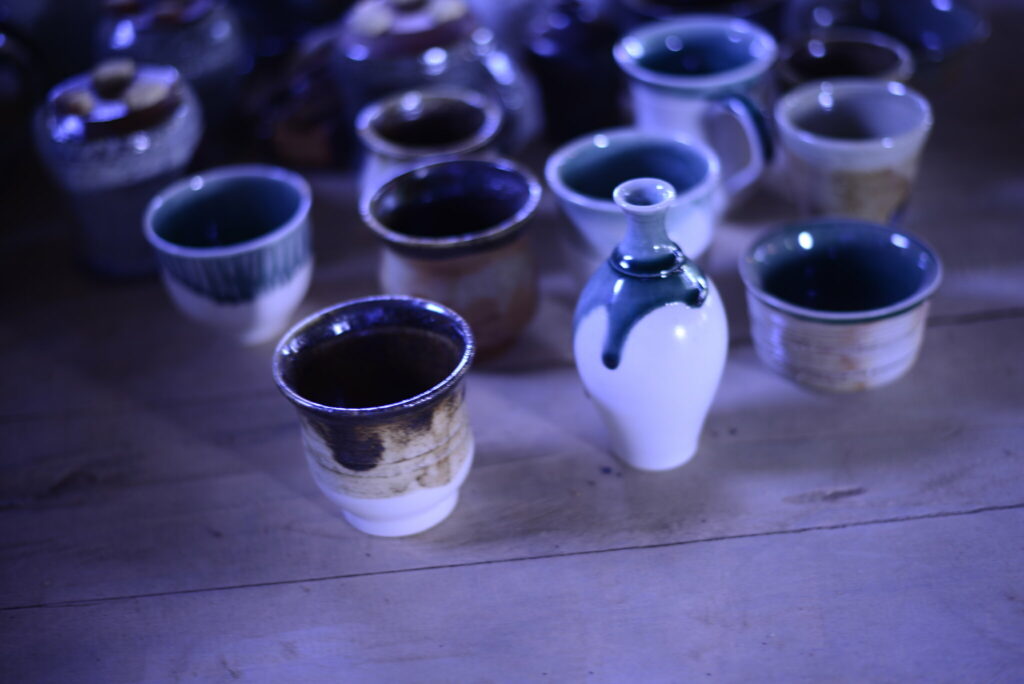
Why a Wood-Fired Kiln is Unique
A wood-fired kiln is special because it creates unique atmospheric glaze effects. The ash from the burning wood contains alkalis and alkaline earth metals like sodium, potassium, and calcium, which are drawn through the kiln and interact with the pottery’s surface, influencing both the clay and glaze finishes.
To identify a piece with atmospheric glaze effects, simply turn it over and examine the bottom. In such kilns, little clay wads are placed beneath pottery pieces to prevent them from fusing to the kiln shelves during firing. Once the firing is complete, these wads are removed, leaving recognizable imprints.
In contrast, electric or gas-fired kilns do not produce these atmospheric effects, demanding extra effort to achieve a variety of textures and appearances. In wood-fired kilns, the firing process greatly impacts the final look of each piece.
The Potters of Telunas
At Telunas, our landscapers also take part in pottery production, contributing significantly to the items we sell in our souvenir shop. Supriyadi and Yan initially had a background in carpentry but were new to ceramics when they joined our team. Their creativity and eagerness to learn have greatly enriched our pottery practice.
Many villagers have large stoneware jars or water vessels salvaged from shipwrecks, yet no one was making new stoneware in the area. When Supriyadi and Yan started working, one of their first challenges was developing a vocabulary to discuss pottery. Paul would ask them, “What do you call this part of the mug?” pointing to various areas of the piece. They worked together to create a functional vocabulary for ceramics.
Pottery Classes for Guests
From the outset, we aimed to offer pottery lessons to guests. However, one challenge with pottery is that clay tends to crack if dried too quickly and can break if fired too rapidly. Clay prefers a slower process and ideally requires around two weeks to dry before firing. This makes it challenging to offer a quick pottery experience that allows guests to take home their creations the same day.
As a solution, we developed a popular activity centered around creating and decorating a 4-inch ceramic tile. Participants create their tiles during the pottery class and typically donate them to our collection. We fire the tiles once we have enough for a batch, and during local service projects, we gift them to local schools to commemorate our collaboration. The schools appreciate these keepsakes!
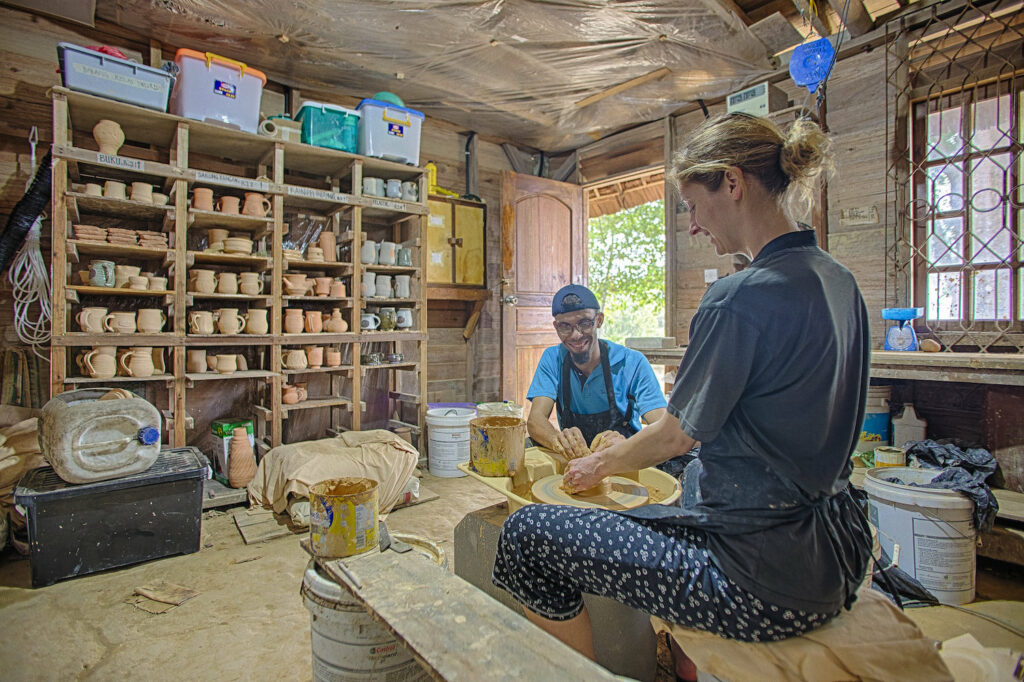
Our Unique Niche
Our pottery studio sets Telunas apart from other resorts in the area, as we are the only resort with a pottery facility.
We do not export our pottery; instead, we primarily sell pottery lessons and souvenirs at Telunas. We also provide a few pieces to Anchor Café in Batam and have recently fulfilled a commission for a local spa.
Our potters balance their pottery work with landscaping, waste management, and facility maintenance. Because we only fire the kiln a few times a year, we can use natural firewood sourced from landscaping trimmings, waste motor oil, and used kitchen oil, minimizing our environmental impact.
Creating with Local Materials
One of the most rewarding aspects of our pottery is that we utilize local materials to add value and create unique pieces. When you pick up a piece of our pottery, you are holding a fragment of Sugi Island. The clay originates from Semokol Point, and the wood ash comes from construction projects and landscaping residues, integrating local elements into each creation. We transform what we have on hand, mold it, fire it, and voilà—artistry is born!


